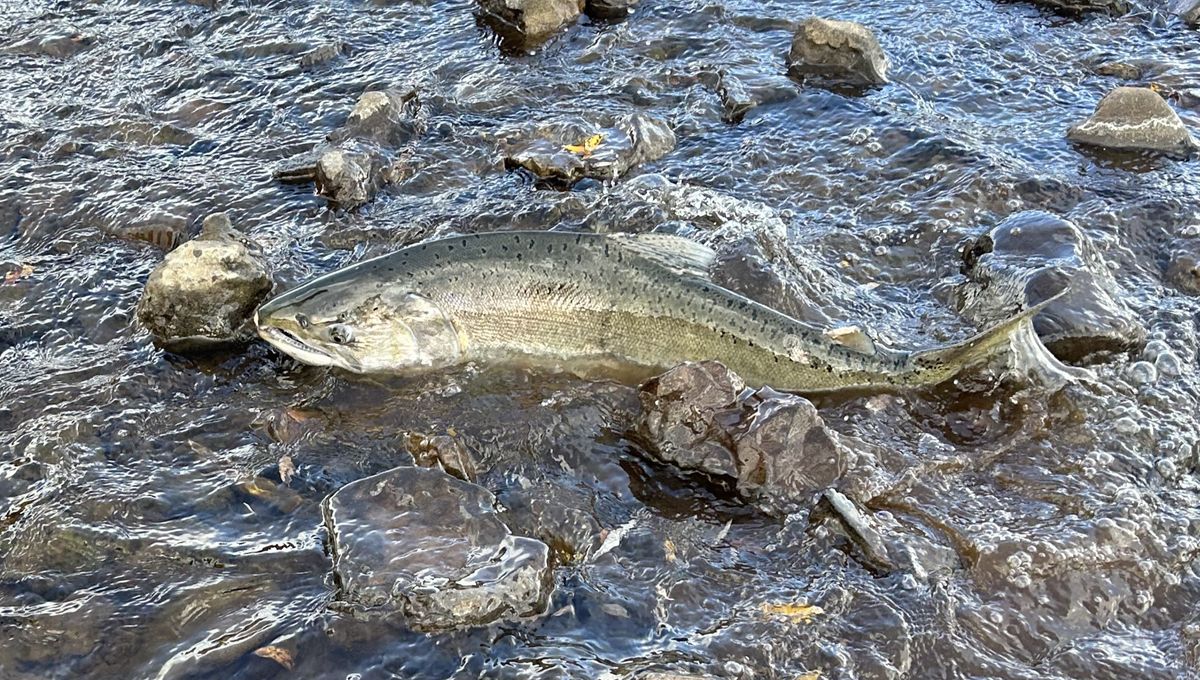
Following the removal of dams along the Klamath River earlier this year, fall-run Chinook salmon have made a long-awaited return to the Oregon portion of the Klamath Basin, having recently been spotted there for the first time in 112 years.
The first salmon (Oncorhynchus tshawytscha) was discovered by biologists with the Oregon Department of Fish and Wildlife (ODFW), who identified the fish on October 16 in a tributary of the Klamath River in southern Oregon, above where the John C. Boyle Dam used to stand.
“We saw a large fish the day before rise to surface in the Klamath River, but we only saw a dorsal fin,” said Mark Hereford, ODFW’s Klamath Fisheries Reintroduction Project Leader, in a statement. “I thought, was that a salmon or maybe it was a very large rainbow trout?”
When Hereford and the team came back the next day, their suspicions were confirmed – multiple Chinook salmon had indeed returned to the river’s basin. Not just in Oregon, either; on October 15, spawning Chinook salmon were spotted in Klamath tributaries in California, in a habitat that had previously been blocked by the Iron Gate Dam since 1961.
As for the salmon found in Oregon, the ODFW believes that they have likely traveled around 370 kilometers (230 miles) from the Pacific Ocean in order to get there.
Such a journey has only recently become possible.
Back in January 2024, officials were in the midst of a huge project to remove four hydroelectric dams from the Klamath River, which were originally built between 1911 and 1962.
The construction of the dams caused a major decline in wild fish stocks, including salmon – their path was not only physically blocked, but the lack of water flow also led to the spread of toxic algae and disease.
This hit to the river’s population of salmon and other fish significantly impacted the Indigenous peoples for whom the fish are both an important food resource and part of their cultures.
After years of efforts by Indigenous peoples and environmentalists to get the dams removed, the Federal Energy Regulatory Commission officially announced in 2022 that the dams would be decommissioned. The removal of the last of the four dams came at the end of August 2024.
The return of the Chinook salmon to the Klamath Basin in the just under two months since has been welcomed by those who fought for the dams’ removal.
“The return of our relatives the c’iyaal’s is overwhelming for our tribe. This is what our members worked for and believed in for so many decades,” said Roberta Frost, Klamath Tribes Secretary.
“I want to honor that work and thank them for their persistence in the face of what felt like an unmovable obstacle. The salmon are just like our tribal people, and they know where home is and returned as soon as they were able.”
Source Link: Salmon Return To Oregon’s Klamath Basin For The First Time Since 1912